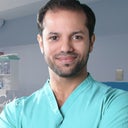How much fat can be appropriately grafted is to some degree a subjective measure, and each provider will have their own way of determining this. There is no objective criteria. Ideally fat grafting should be done maintaining a reasonably healthy, grafted fat to host the tissue volume ratio. Someone has seven layers of soft tissue, representing host of tissue in the area to be augmented. Then smaller amounts of fat can only be grafted in order to prevent and avoid symptomatic fat necrosis, including oil, cysts, and other complications. Overgrafting increases the chances of negative Side effects complications, and eventually reduces the percentage of fat survival.

